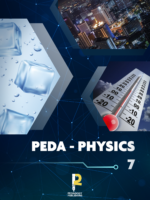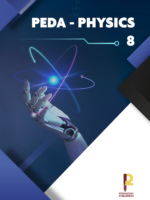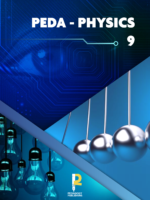-
Peda-Français PS1
Cette série est adressée aux apprenants du cycle maternel, tenant compte de la formation des apprenants autonomes et créatifs, pouvant s’exprimer avec fluidité et achevant chaque conte par un projet permettant de réinvestir les acquis et détirer une moralité servant le savoir – vivre ou le savoir – être.
-
Peda-Français PS2
Cette série est adressée aux apprenants du cycle maternel, tenant compte de la formation des apprenants autonomes et créatifs, pouvant s’exprimer avec fluidité et achevant chaque conte par un projet permettant de réinvestir les acquis et détirer une moralité servant le savoir – vivre ou le savoir – être.
-
Peda-Français PS3
Cette série est adressée aux apprenants du cycle maternel, tenant compte de la formation des apprenants autonomes et créatifs, pouvant s’exprimer avec fluidité et achevant chaque conte par un projet permettant de réinvestir les acquis et détirer une moralité servant le savoir – vivre ou le savoir – être.
-
Peda-History Grade 7
Developed the 7th grade history book according to the new curricula of the Educational Center for Research and Development. The book comprises six distinct sections, each focusing on a specific historical period or theme.
In the first section, students will explore the factors that led to the decline and collapse of the Abbasid state, a crucial event in the history of Islam and the Middle East. The second section covers the Crusades, a series of religious wars that shaped the political, cultural, and economic landscape of medieval Europe and the Islamic world
Moving on to the third section, learners will delve into the Ayyubid states, which emerged in the aftermath of the Crusades and became a dominant force in the Islamic world. The fourth section sheds light on the Mamluks, an influential slave dynasty that ruled over Egypt and Syria for centuries. The fifth section covers the Ottomans, a powerful empire that lasted for more than six centuries and left an indelible mark on the history of the Balkans, the Middle East, and North Africa.
Finally, in the sixth and last section, students will learn about the geographic discoveries, the European Renaissance, and religious reform, which marked a turning point in human history and paved the way for the modern era.
-
Peda-History Grade 8
In accordance with the new curricula of the Educational Center for Research and Development, the 8th grade history book has been developed to delve deeper into the rich and diverse history of Lebanon and Europe.
The first section of the book delves into the intriguing history of the Lebanese Emirate during the relevant period, exploring the political, social, and economic factors that shaped this period in Lebanon’s history. The second section is equally captivating, taking a deep dive into the Lebanese Emirate during the era of the Shihab family, highlighting the significant developments and transformations that occurred during this time.
Moving on, the third section explores the era of the Qaimaqams, providing an in-depth analysis of the political and social factors that led to the establishment of this unique system of governance in Lebanon. The fourth section shifts the focus to the Mutassarifia, a system of local government that emerged in Lebanon during the Ottoman era, examining its impact on the region’s history and development.
Finally, the fifth section of the book explores the captivating history of Europe in the 18th and 19th centuries, highlighting the significant events and movements that transformed the continent during this era.
-
Peda-Math Grade 2
The Math Grade 2 textbook is developed in accordance with the new curricula of the CRDP. This book covers the following topics:
Numbers up to 999, hundreds, multiplication and tables from 0 to 10, multiplying a 2-digit number by a 1-digit number, measuring lengths in meters and centimeters, segments and lines, symmetry, time, plane figures and solids, locating squares and points on a grid, calculating by groups, measuring weights, understanding information and givens, choosing the right operation, and following visual instructions.
In each topic, students go through the following steps to master the learning objectives: “Let’s Learn Together” introduces the main objective, “Let’s Practice” introduces direct application for the objective, and “I Work by Myself” is the self-evaluation part for the students.
-
Peda-Math Grade 1
The Math Grade 1 textbook is developed in accordance with the new curricula of the CRDP. This book covers the following topics:
Numbers from 0 to 100, ordinal numbers, tens from 10 to 100, addition and subtraction for up to three 2-digit numbers, squares, rectangles, circles, triangles, cubes, cuboids, spheres, cylinders, pyramids, positioning, lines, reproducing a figure on a grid, measuring and comparing lengths, comparing weights, congruent figures, and symmetry.
In each topic, students go through the following steps to master the learning objectives: “Let’s Learn Together” introduces the main objective, “Let’s Practice” introduces direct application for the objective, and “I Work by Myself” is the self-evaluation part for the students
-
Peda-Math Grade 3
The Math Grade 3 textbook is developed in accordance with the new curricula of the CRDP. This book covers the following topics:
Numbers up to 99,999, multiplication and division, division techniques, sharing and distributing, doubles and triples, fractions (halves, thirds, and others), rounding numbers, time and duration, calendars, units of length (millimeters and kilometers), measuring masses, finding information in a table, identifying needed information, asking questions, solving without calculating, following visual instructions, writing the givens of a problem, right angles, perpendicular lines, midpoints of segments, perimeters, solids, squares, rectangles, and symmetry.
In each topic, students go through the following steps to master the learning objectives: “Let’s Learn Together” introduces the main objective, “Let’s Practice” introduces direct application for the objective, and “I Work by Myself” is the self-evaluation part for the students
-
Peda-Math Grade 4
The Math Grade 4 textbook is developed in accordance with the new curricula of the CRDP. This book covers the following topics:
Hundred thousand, millions, fractions, decimal numbers, multiplication and multiples of whole numbers, division by one- and 2-digit numbers and by multiples of 10, calculators, calculating time and duration, statistics, measuring lengths, masses and capacities, perimeters, areas, distances from points to lines, symmetry, locating, geometrical vocabulary, perpendicular and parallel lines, triangles, circles, polygons, quadrilaterals, and solids.
In each topic, students go through the following steps to master the learning objectives: introducing new information by building on previous knowledge through the parts “Warm Up,” “Do You Remember,” “What Do You Observe,” wrapping up the rules in the “Keep in Mind” section, and then applying through exercises escalating in their levels in the parts “Let’s Work Out,” “Self-Evaluation,” “Going Deeper,” and “Playing Area.”
-
Peda-Math Grade 5
The Math Grade 5 textbook is developed in accordance with the new curricula. This book covers the following topics:
Statistics, fractions, addition and subtraction of fractions, mixed numbers, decimal numbers (numeration system, representation, comparison, addition, subtraction, multiplication, and division), decimal quotients, common multiples of two whole numbers, divisors and divisibility characteristics, products of duration by whole numbers, diameters and lengths of circles, areas of discs, perimeters, square and rectangle areas, cubes, solid patterns, characteristics of quadrilaterals, analytic geometry, distances between two parallels, dilation, angles, and capacity measurements.
In each topic, students go through the following steps to master the learning objectives: introducing new information by building on previous knowledge through the parts “To Think,” “Activity,” wrapping up the rules in the “Mathematical Vocabulary” and “Essential” sections, and then applying through exercises escalating in their levels in the parts “Exercises” and “Problems.”
-
Peda-Math Grade 6
The Math Grade 6 textbook is developed in accordance with the new curricula of the CRDP. This book covers the following topics:
Area, volume, fractions, fractional and decimal writing, multiplication, division, and irreducible fractions; proportionality, percentage, quotient and ratio, statistics, signed numbers (definition, comparison, addition, and subtraction), division of duration, literal expressions, operational properties, integers, GCD and LCM, powers, lines and circles, patterns and solids, angles (adjacent and vertically opposite), bisectors, perpendicular bisectors, triangles, and centers of symmetry.
In each topic, students go through the following steps to master the learning objectives: introducing new information by building on previous knowledge through the parts “To Think,” “Activity,” wrapping up the rules in the “Mathematical Vocabulary” and “Essential” sections, and then applying through exercises escalating in their levels in the parts “Exercises” and “Problems.”
-
Peda-Math Grade 7
The Math Grade 7 textbook is developed in accordance with the new curricula of the CRDP. This book covers the following topics:
Basic geometry, locating points, congruent triangles, parallel and perpendicular lines, bisectors, perpendicular bisectors, angles, and lines. In algebra: powers, prime numbers, signed numbers, fractions, algebraic expressions (expanding and factorization), equations, GCD, LCM, and proportionality.
In each topic, students go through the following steps to master the learning objectives: introducing new information by building on previous knowledge through the parts “To Think,” “Activity,” and “I Conclude,” and applying directly in the “Application.” They wrap up the rules in the “Rules for You” section and then practice through exercises escalating in their levels in the parts “Warm Up,” “Reactivate Knowledge,” “Dig Deeper,” “I Evaluate Myself,” and “Manual Activity.”
-
Peda-Math Grade 8
The Math Grade 8 textbook is developed in accordance with the new curricula of the CRDP. This book covers the following topics:
Powers, powers of 10, square roots, GCD, LCM, proportions, fractions, remarkable identities, equations, inequalities, spotting, midpoint theorem, right triangles, translations and vectors, circles, arcs and angles, parallelograms, rhombuses, squares, rectangles, space, and statistics.
In each topic, students go through the following steps to master the learning objectives: introducing new information by building on previous knowledge through the parts “To Think,” “Activity,” and “I Conclude,” and applying directly in the “Application.” They wrap up the rules in the “Rules for You” section and then practice through exercises escalating in their levels
-
Peda-Math Grade 9
Math grade 9 textbook is developed in accordance with the new curricula of the CRDP. This book covers the following topics:
Line and circle, proportionality, line in a coordinate system, Thales’ theorem, systems of equations, similar triangles, real numbers, translation vectors, algebraic expressions, trigonometric relations, analytic geometry, and statistical surveys.
In each topic, students go through the following steps to master the learning objectives: introducing new information by building on previous knowledge through the parts “To think,” “Recall,” “Activity,” and “I conclude”; applying directly in the “Application” section; wrapping up the rules in the “Rules for you” section; and then practicing through exercises escalating in their levels in the “Exercises and Problems” sections.
-
Peda-Physics Grade 7
The Grade 7 Physics textbook was developed in accordance with the new CRDP curriculum. This book covers the following chapters:
Properties of Substances, Volume, Mass, Constituents of Matter, Heat Transmission, State Changes, Expansion, Electric Circuits, Electrical Measurements, Grouping of Lamps, and Safety.
Each chapter is divided into several activities that include various parts: the brainstorming section, “I Discover” for learning new information, “I Get the Point” as the conclusion, “I Get Evaluated” where students solve exercises for assessment, and “Let’s Learn More” which provides additional information about the lesson. At the end of each chapter, the activities are followed by “Essentials” (the summary) and some exercises
-
Peda-Physics Grade 8
The Grade 8 Physics textbook was developed in accordance with the new CRDP curriculum. This book covers the following chapters:
Motion, Velocity, Mechanical Action, Forces, Weight, Work and Power of a Force, Mechanical Energy, Different Forms of Energy, Energy Sources, Mechanical Waves, Sound Waves, Electromagnetic Waves, Colors, Rectilinear Propagation of Light, and Light Reflection.
Each chapter is divided into several activities that include various parts: the brainstorming section, “I Discover” for learning new information, “I Get the Point” as the conclusion, “I Get Evaluated” where students solve exercises for assessment, and “Let’s Learn More” which provides additional information about the lesson. At the end of each chapter, the activities are followed by “Essentials” (the summary) and some exercises.
-
Peda-Physics Grade 9
The Grade 9 Physics textbook was developed in accordance with the new CRDP curriculum. This book covers the following chapters:
Lenses, Image Formation, DC Voltage, AC Voltage and Mains Voltage, Resistors, Electric Power and Energy, Mechanical Actions, Equilibrium of a Body, Pressure in Liquids, and Archimedes’ Upthrust.
Each chapter is divided into several activities that include various parts: the brainstorming section, “I Discover” for learning new information, “I Get the Point” as the conclusion, “I Get Evaluated” where students solve exercises for assessment, and “Let’s Learn More” which provides additional information about the lesson. At the end of each chapter, the activities are followed by “Essentials” (the summary) and some exercises.
-
Peda-Science Grade 1
The Grade 1 Science textbook is designed in alignment with the new CRDP curriculum. This book explores various topics such as:
Plant and Animal Habitats, Human Health, Matter and Energy, as well as Earth and the Universe. Each unit consists of chapters, which are further divided into activities.
These activities encompass real-life examples, a “Let’s Discover” section featuring documents aligned with the activity objectives, a “Let’s Write” and “Let’s Learn” section that provides a summary, a “Let’s Practice” section containing exercises related to the main objectives, and a “Let’s Enjoy Science” section that encourages hands-on learning through crafts, experiments, or research.
-
Peda-Science Grade 2
The Grade 2 Science textbook is developed in accordance with the new CRDP curriculum. This book covers the following topics:
Plants and Their Habitats, Animals and Their Habitats, Man and Health, Matter and Energy, and finally Earth and Universe. Each unit is divided into chapters, and each chapter is divided into activities.
The activities include: an example from real-life situations, “Let’s Discover” which contains documents that match the objectives of the activity, “Let’s Write” and “Let’s Learn” which includes a summary, “Let’s Practice” which features exercises about the main objectives, and “Let’s Enjoy Science” which involves making crafts, conducting experiments, or researching.
-
Peda-Science Grade 3
The Grade 3 Science textbook is developed in accordance with the new CRDP curriculum. This book covers the following topics:
Plants, Animals and Their Environment, Environmental Pollution, Man and Health, Matter and Energy, and finally Earth and Universe.
Each unit is divided into chapters, and each chapter is divided into activities. The activities include: an example from real-life situations, “Let’s Discover” which contains documents that match the objectives of the activity, “Let’s Write” and “Let’s Learn” which includes a summary, “Let’s Practice” which features exercises about the main objectives, and “Let’s Enjoy Science” which involves making crafts, conducting experiments, or researching





















